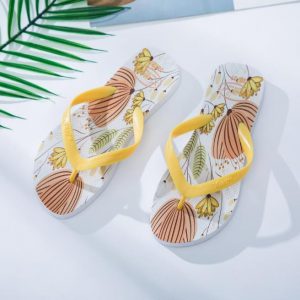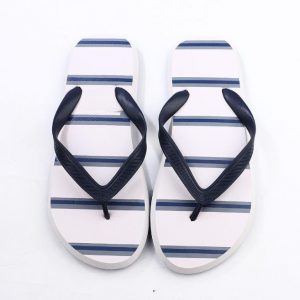Flip flops, also known as thongs, sandals, or slippers in some regions, have a long and fascinating history that spans thousands of years. Here’s an overview of the evolution of flip flops:
Ancient Origins: The concept of flip flops dates back to ancient civilizations. Archaeological evidence suggests that early versions of flip flops were worn in ancient Egypt, dating back as far as 4,000 BC. These early flip flops were made from natural materials like papyrus or palm leaves.
Traditional Footwear: Flip flops were widely worn in various cultures around the world, especially in warm climates. They were popular among people in ancient Rome, Greece, Japan, China, and many other regions.
Rise in Popularity: Flip flops gained popularity in modern times during the post-World War II era, particularly in the United States. Soldiers returning from the Pacific brought back the style, and it gradually became a casual and popular footwear choice.
Rubber Revolution: The real evolution of modern flip flops came with the introduction of rubber materials. In the 1950s, rubber flip flops were mass-produced, making them affordable and widely accessible to the general public.
Beachwear and Casual Fashion: As beach culture and casual fashion became more prominent in the mid-20th century, flip flops became synonymous with laid-back, relaxed styles, perfect for summer days and vacations.
Branding and Fashion Statements: In the 1960s and beyond, flip flop styles diversified, and various brands began offering their own designs. Flip flops became a fashion statement, with designer and branded flip flops becoming popular among consumers.
Athletic and Active Wear: With advancements in materials and technology, flip flops evolved to cater to different lifestyles. Athletic brands started producing flip flops with arch support and cushioning, making them suitable for activities like hiking and water sports.
Eco-Friendly Initiatives: As environmental consciousness grew, some companies began producing eco-friendly flip flops made from recycled materials or natural fibers.
Specialized Footwear: Footwear companies recognized the need for supportive and orthopedic flip flops. They introduced models with features like arch support, motion control, and heel cups, catering to individuals with foot conditions like plantar fasciitis.
Fashionable Adaptations: Flip flops continue to evolve as fashion trends change. They are now available in various styles, colors, patterns, and materials, making them a versatile and fashionable choice for casual wear.
Throughout history, flip flops have remained a popular and iconic footwear choice, representing comfort, simplicity, and ease of wear. They have become a staple in warm climates, beach destinations, and casual settings worldwide, and their evolution continues as designers and manufacturers adapt to the needs and preferences of modern consumers.


















